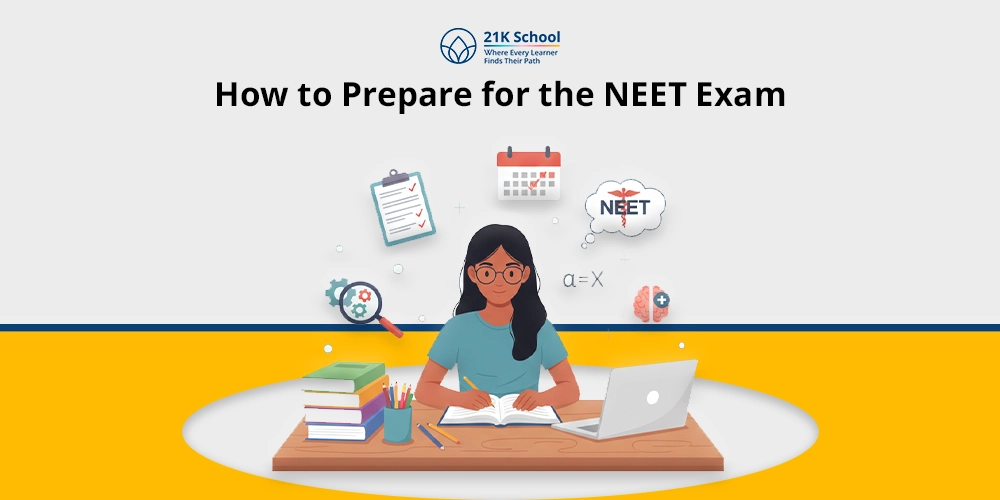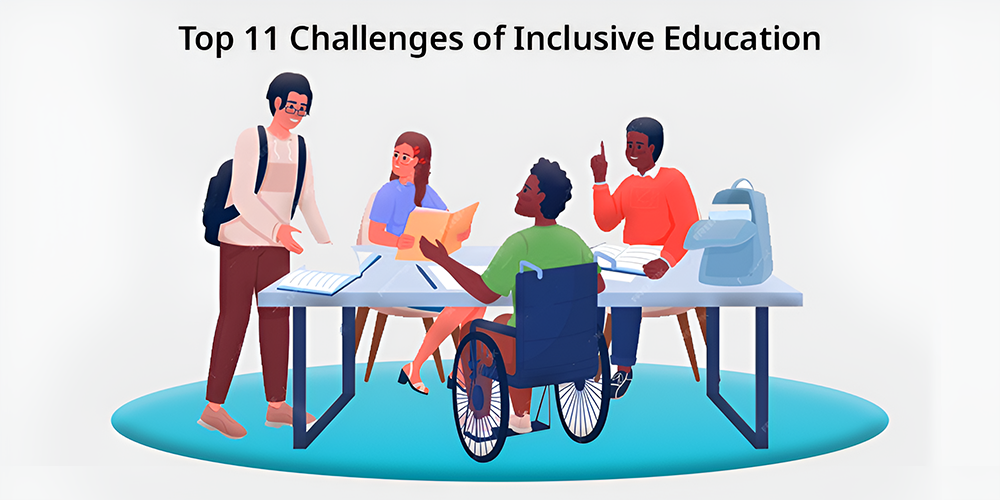
Schools face many problems when trying to include all students including people’s attitudes towards diversity and shortages of necessary resources plus both insufficient teacher preparation and educational system limitations.
Along with the challenges, there is a importance of inclusive education . This content examines every challenge involved with inclusive education alongside suggested solutions.
Contents
- What is Inclusive Education?
- Top 11 Challenges of Inclusive Education
- 1. Attitudinal Barriers and Curriculum
- 2. Attitude of Regular Teachers
- 3. Develop Inclusive Classrooms
- 4. Inadequate Teacher Training
- 5. Insufficient Resources
- 6. Social Stigma and Bullying
- 7. Buildings and Infrastructure
- 8. Community Engagement
- 9. Enrollment of Disabled Students
- 10. Lack of Collaboration Among Staff
- 11. Lack of Inclusive Teaching Methods
- Ending Note
What is Inclusive Education?
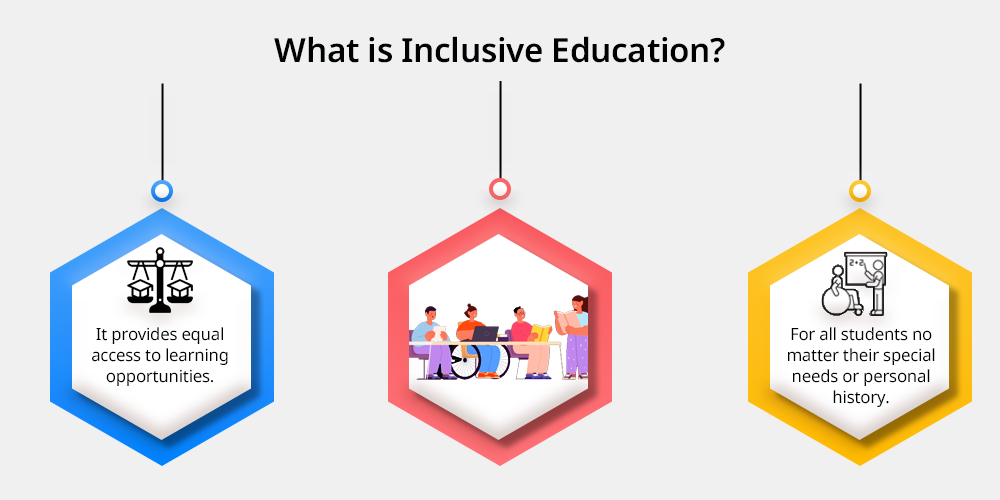
Inclusive education provides equal access to learning opportunities for all students no matter their special needs or personal history. Our system supports and honors every student while helping them learn.
Despite global support for inclusive education as a modern teaching method the implementation faces substantial difficulties.
Also Read: Indian Education System Problems: 15 Key Disadvantages and Effective Solutions
Top 11 Challenges of Inclusive Education

1. Attitudinal Barriers and Curriculum
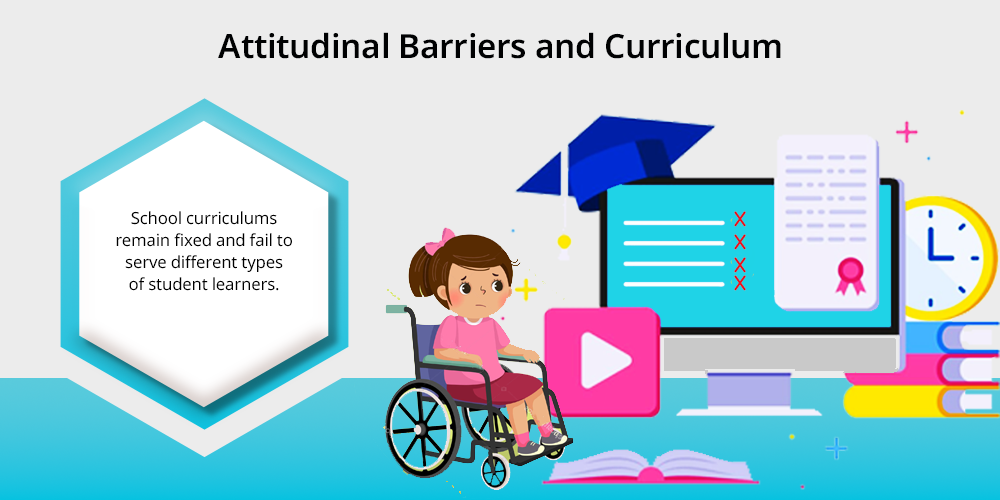
Inclusive education struggles greatly because of the common views people hold. People keep believing that special needs children need isolated schools instead of joining traditional learning.
The way people think and believe right now blocks opportunities to include all students in learning.
Also Read: Traditional Learning VS Hybrid Learning
School curriculums remain fixed and fail to serve different types of student learners. Classes typically focus on the main student group which creates problems for students who need different teaching and extra help.
The limited teaching methods available prevent teachers from helping all students succeed in an inclusion setting.
2. Attitude of Regular Teachers
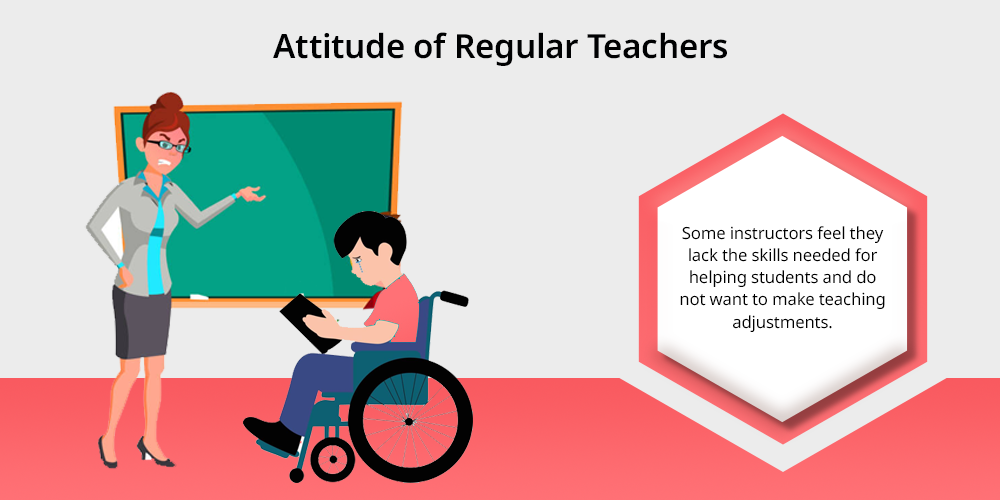
Regular teachers’ mindset determines how well inclusive education will work. Many teachers do not support meeting the learning needs of diverse students.
Some instructors feel they lack the skills needed for helping students and do not want to make teaching adjustments.
Many teachers doubt their skills to manage the different learning situations present in an inclusive class.
When teachers are apprehensive about teaching special needs students they often overlook or inadequately help these students causing problems for inclusive education.
3. Develop Inclusive Classrooms

Building inclusive classrooms requires more than placing students with different needs into standard education settings.
All students need to experience and live in a supportive environment that shows them acceptance and appreciation. Creating this environment needs many detailed efforts.
Students in an inclusive classroom should connect through respect while learning how to work together.
Teachers should use various teaching methods to suit different student learning preferences so all learners succeed.
Creating this environment proves difficult because of institutional barriers and poor knowledge about inclusion.
4. Inadequate Teacher Training
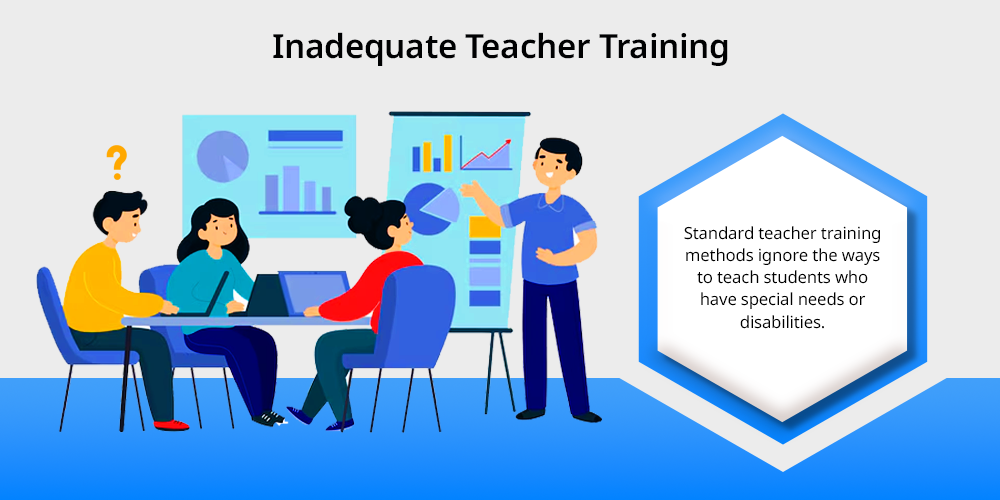
A good teacher with proper training makes successful inclusive education happen. A number of teachers receive insufficient training before they start teaching diverse student groups.
Standard teacher training methods ignore the ways to teach students who have special needs or disabilities.
The training gap makes it hard for teachers to solve common inclusion challenges including behavioral management and accessibility adaptations.
Teachers without suitable training find it hard to offer equal learning chances to every student thereby weakening inclusive education results.
5. Insufficient Resources
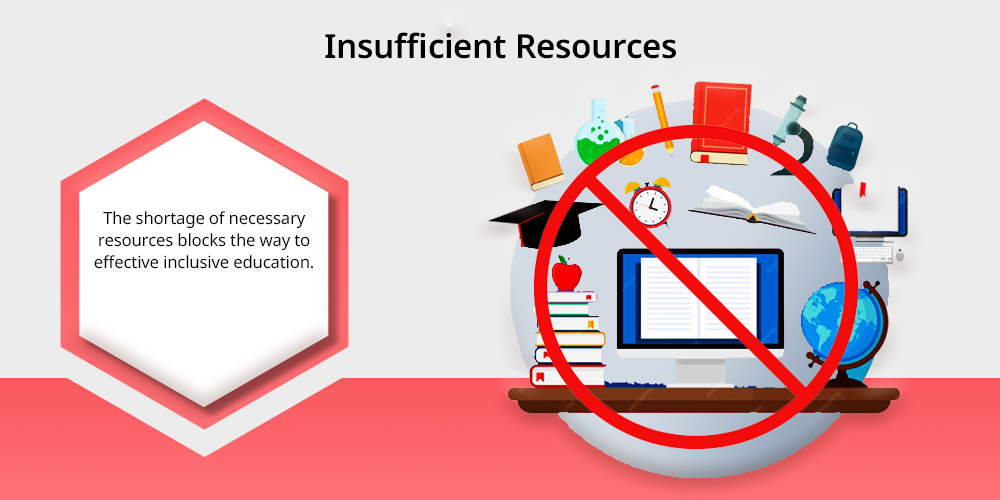
The shortage of necessary resources blocks the way to effective inclusive education.
Schools in low-income districts find it hard to operate because they have insufficient funds and poor teaching supplies plus restricted tools for education technology.
To practice inclusive education class needs specific tools plus extra learning materials and special staff support. Students with disabilities need extra resources to learn which schools cannot easily provide.
6. Social Stigma and Bullying
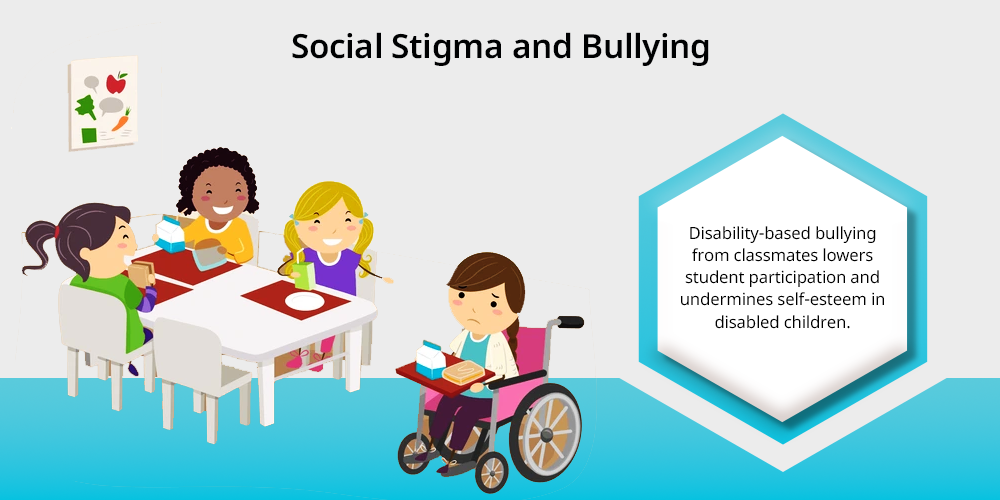
Society’s negative views about disabilities stop inclusive education from working well. Disability-based bullying from classmates lowers student participation and undermines self-esteem in disabled children.
Parents often avoid regular school enrollment because they need protection from social judgment against their children.
People’s ignorance and insensitivity make it more difficult to include everyone because of how they affect community behavior.
7. Buildings and Infrastructure
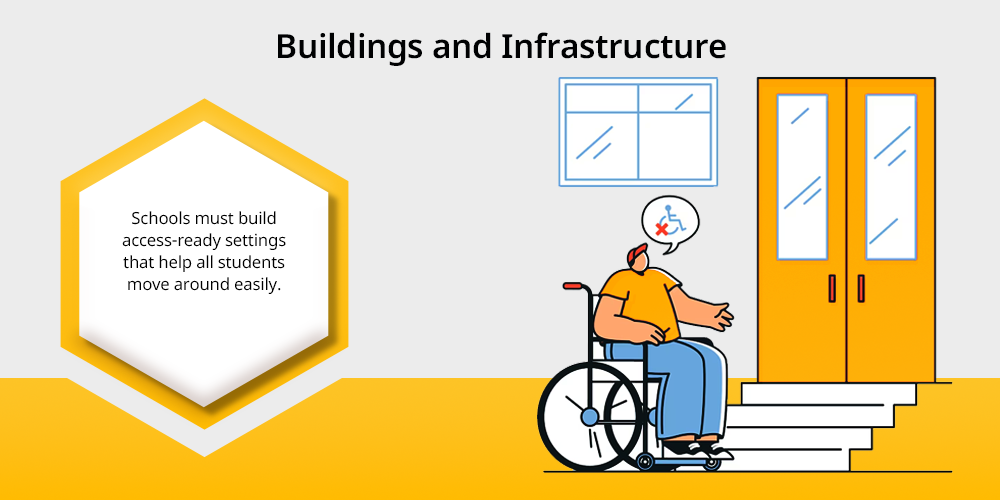
Schools must build access-ready settings that help all students move around easily. Numerous schools still need to build facilities that help students with disabilities access education.
Regular educational facilities do not provide wheelchair ramps and elevators plus accessible toilets and suitable student seating areas.
Students with disabilities face exclusion because their parents hesitate to enroll them when schools lack basic accessibility features.
8. Community Engagement
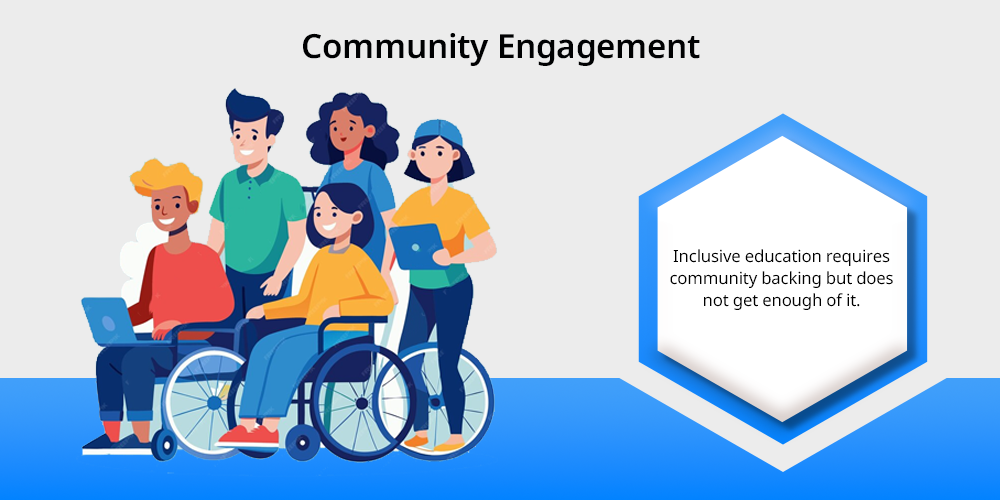
Inclusive education requires community backing but does not get enough of it.
The best educational environment for all students comes when parents, local groups and community leaders unite with schools.
When communities do not participate in inclusive education efforts the projects lack both support and knowledge. Without community participation any attempt to support inclusion fails to work properly.
9. Enrollment of Disabled Students
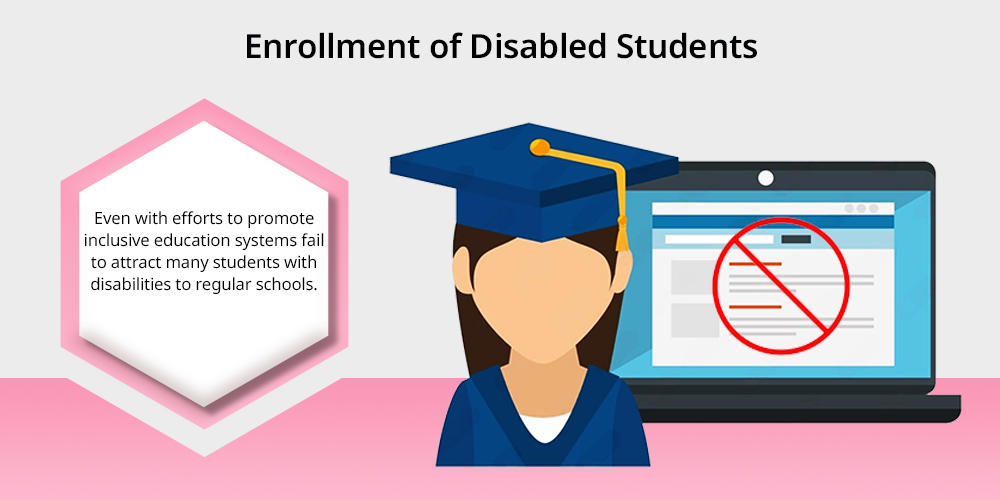
Even with efforts to promote inclusive education systems fail to attract many students with disabilities to regular schools.
Many parents avoid signing up their children to inclusive schools because they trust these institutions will not give sufficient help or protect their kids from bullying and still fail to fulfill their child’s requirements.
Schools find it difficult to recognize and register students with disabilities while also experiencing enrollment barriers in rural districts because many individuals lack information about inclusive education .
Many children miss their educational opportunities as a result.
10. Lack of Collaboration Among Staff
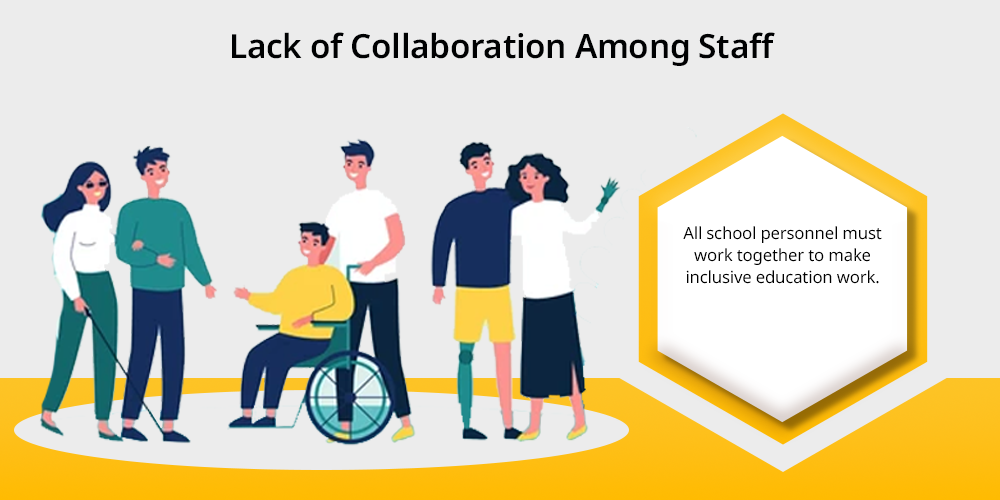
All school personnel must work together to make inclusive education work. When staff members do not work well together they bring hard problems to their organization.
When staff members resist inclusivity efforts teachers with special needs students may feel unsupported in their work. The team needs to work well together while speaking openly to give students proper support.
11. Lack of Inclusive Teaching Methods
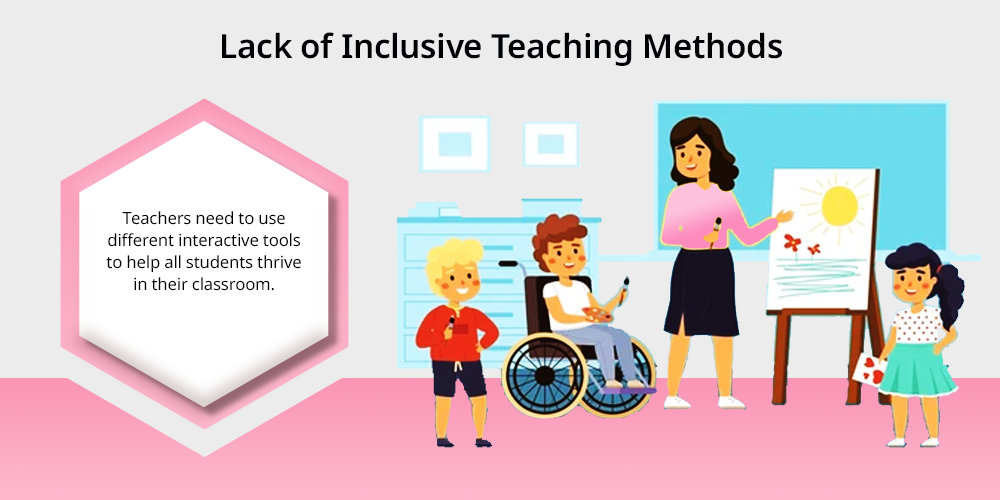
Most schools use teaching techniques that do not serve all types of students effectively. Most teaching methods rely on speaking to class and written assignments which fail to work for learners with distinct study styles.
Teachers need to use different interactive tools to help all students thrive in their classroom. Effective inclusive education suffers because teachers need more knowledge and instruction on how to teach all students.
Also Read: Benefits of Inclusive Education .
Ending Note
Despite its importance and moral value creating inclusive education presents practical difficulties.
Support systems including updated teacher instruction and community participation must go along with attitude improvements and facility upgrades to create effective inclusive education.
All stakeholders need to collaborate to find solutions for these education problems.
Our commitment to inclusive teaching lets every child pursue their learning path regardless of their special needs or where they come from.
Our goal should be removing obstacles to inclusive education to develop a better future for everyone.


